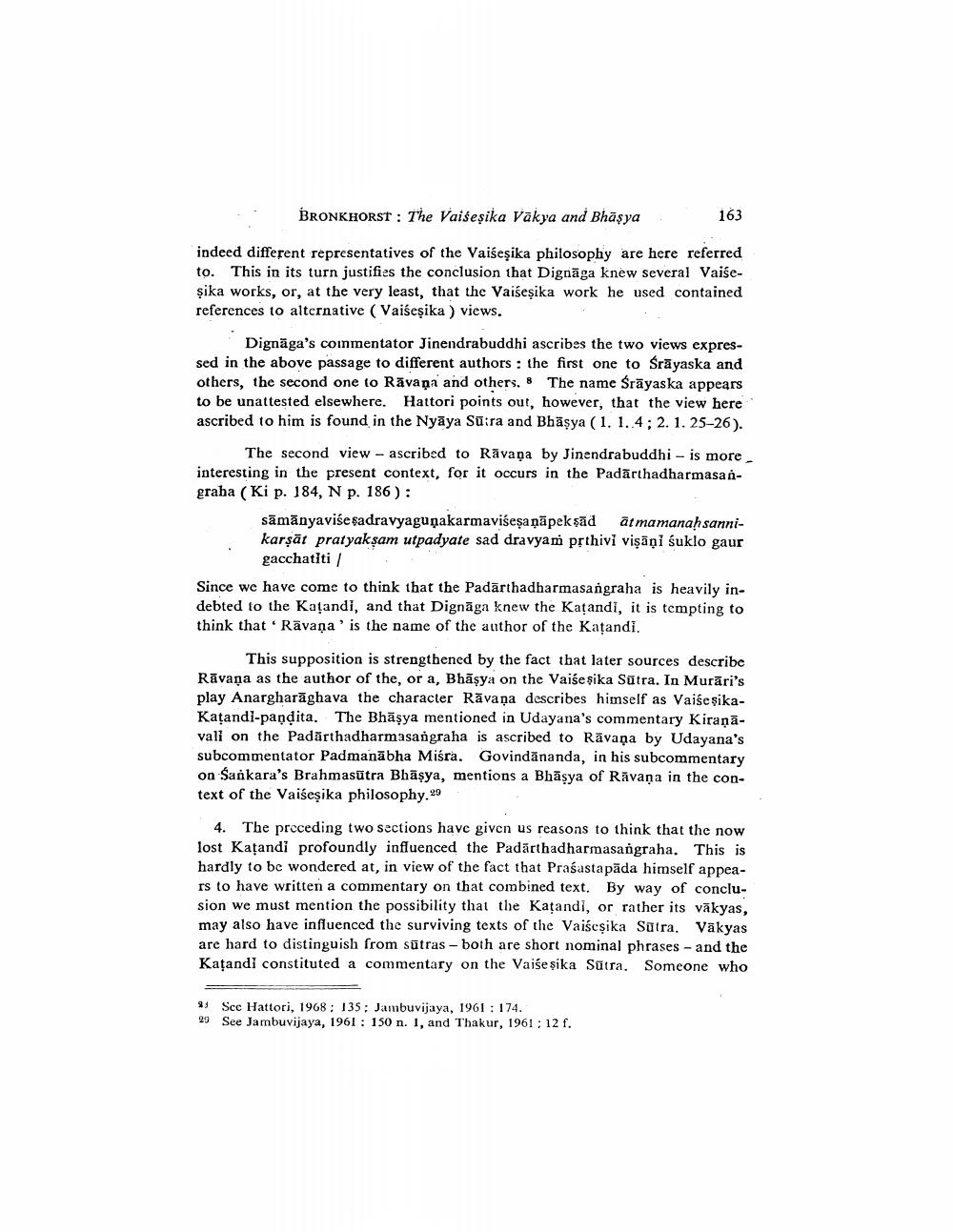________________
BRONKHORST: The Vaiseşika Vakya and Bhāṣya
indeed different representatives of the Vaiśeşika philosophy are here referred to. This in its turn justifies the conclusion that Dignaga knew several Vaiseşika works, or, at the very least, that the Vaiseṣika work he used contained references to alternative (Vaiśeṣika) views.
163
Dignaga's commentator Jinendrabuddhi ascribes the two views expressed in the above passage to different authors: the first one to Śrāyaska and others, the second one to Ravana and others. The name Śrāyaska appears to be unattested elsewhere. Hattori points out, however, that the view here ascribed to him is found in the Nyaya Sutra and Bhāṣya (1. 1..4; 2. 1. 25-26).
The second view ascribed to Ravana by Jinendrabuddhi is more, interesting in the present context, for it occurs in the Padarthadharmasangraha (Ki p. 184, N p. 186):
samanyaviseradravyagupakarmaviseṣaṇāpekad
atmamanahsanni
karṣāt pratyakṣam utpadyate sad dravyam pṛthivi viṣāņi śuklo gaur gacchatiti /
Since we have come to think that the Padarthadharmasangraha is heavily indebted to the Katandi, and that Dignaga knew the Kaṭandi, it is tempting to think that Ravana' is the name of the author of the Kaṭandi.
This supposition is strengthened by the fact that later sources describe Rāvana as the author of the, or a, Bhasya on the Vaise şika Sutra. In Murari's play Anargharaghava the character Ravana describes himself as Vaise şikaKatandi-pandita. The Bhāṣya mentioned in Udayana's commentary Kiraṇāvali on the Padarthadharmasangraha is ascribed to Ravana by Udayana's subcommentator Padmanabha Miśra. Govindānanda, in his subcommentary on Sankara's Brahmasutra Bhāṣya, mentions a Bhasya of Ravana in the context of the Vaiśeşika philosophy.29
4. The preceding two sections have given us reasons to think that the now lost Kațandi profoundly influenced the Padarthadharmasangraha. This is hardly to be wondered at, in view of the fact that Prasastapāda himself appears to have written a commentary on that combined text. By way of conclusion we must mention the possibility that the Kațandi, or rather its vākyas, may also have influenced the surviving texts of the Vaiścṣika Sutra. Vākyas are hard to distinguish from sutras - both are short nominal phrases - and the Kaţandi constituted a commentary on the Vaise şika Sutra. Someone who
21
See Hattori, 1968: 135; Jambuvijaya, 1961: 174.
29 See Jambuvijaya, 1961: 150 n. 1, and Thakur, 1961: 12 f.




